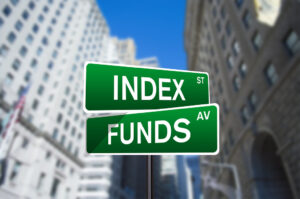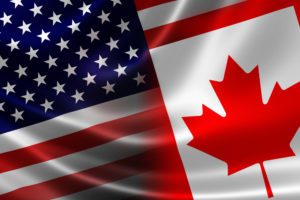
By Noah Solomon
Special to Financial Independence Hub
Well, I won’t back down
No I won’t back down
You could stand me up at the gates of Hell
But I won’t back down
No I’ll stand my ground
Won’t be turned around
And I’ll keep this world from draggin’ me down
Gonna stand my ground
And I won’t back down
– Tom Petty ©Emi Music Publishing
The (Passive) Barbarians at the Gate
Since 2008, there has been a major shift from actively managed funds into passive, index-tracking investments. During this time, more than $1 trillion has flowed from actively managed U.S. equity funds into their passive counterparts, which have increased their share of the U.S. investment pie from under 20% to over 40%.
The Efficient Market Theory and Active Management: Why Bother?
The theory underlying passive investing is the efficient-market hypothesis (EMH), which was developed in the 1960s at the Chicago Graduate School of Business. The EMH states that asset prices reflect all available information, causing securities to always be priced correctly, thereby making markets efficient. By extension, it asserts that you cannot achieve higher returns without assuming a commensurate amount of incremental risk, nor can you reduce risk without sacrificing a commensurate amount of return. In essence, the EMH contends that it is impossible to consistently “beat the market” on a risk-adjusted basis. When applied to the decision to hire an active manager rather than a passive index fund, the EMH can be neatly summarized as “why bother?”
It might seem that, as an active manager, I am shooting myself in the foot by pointing out the success of passive investing at the expense of its active counterpart … but bear with me for the punchline.
Bogle’s Folly & Not Backing Down
The first index funds were launched in the early 1970s by American National Bank, Batterymarch Financial Management, and Wells Fargo, and were available only to large pension plans. A few years later, the Vanguard First Index Investment Fund (now the Vanguard S&P 500 Index Fund), was launched as the first index fund available to individual investors. The fund was the brainchild of Vanguard founder Jack Bogle, who believed that it would be difficult for actively managed mutual funds to outperform an index fund once their costs and fees were subtracted from returns. His goal was to offer investors a diversified fund at minimal cost that would give them what he called their “fair share” of the stock market’s return.
In its initial public offering, the fund brought in only $11.3 million. Vanguard’s competitors referred to the fund as “Bogle’s Folly,” stating that investors wanted nothing to do with a fund that, by its very nature, could never outperform the market. To the benefit of the investing public, Bogle did not back down. Vanguard currently manages over $9 trillion in assets, the bulk of which is in index funds and exchange-traded funds. Importantly, approximately half of all assets managed by investment companies in the U.S. are invested in Bogle’s Folly and its descendants.
Bogle permanently changed the investment industry. Any investors can purchase shares of low-cost index funds in almost every global asset class. At Berkshire Hathaway Inc.’s 2017 annual meeting, Buffett estimated that by making low-cost index funds so popular for investors, Bogle “put tens and tens and tens of billions of dollars into their pockets.” According to Buffett, “Jack did more for American investors as a whole than any individual I’ve known.”
The Numbers Don’t Lie: Hype vs. Reality
In most cases, the long-term evidence makes it hard to strongly disagree with the EMH, and by extension to advocate for active over passive management. Specifically, active management has by and large failed to deliver.
- According to S&P Global, 78.7% of U.S. active large-cap managers have underperformed the S&P 500 Index over the past five years ending December 31, 2023.
- A $10 million investment in the index made at the end of 2018 would be worth $20,724,263 five years later, as compared to an average value for active managers of $18,481,489, representing a shortfall of $2,242,774 vs. the index.
- Extrapolating the different rates of return of the index and active managers for another five years, the average shortfall of active managers increases from $2,242,774 to $8,792,966. After 20 years, the difference grows by an additional $59,006,123 to $67,799,089.
The Canadian experience has been similarly damning:
- According to S&P Global, 93.0% of Canadian equity managers have underperformed the TSX Composite Index over the past five years ending December 31, 2023.
- A $10 million investment in the index made at the end of 2018 would be worth $17,079,526 five years later, as compared to an average value of $15,217,594 for active managers, representing a shortfall of $1,861,932 vs. the index.
- Extrapolating the different rates of return of the index and active managers for another five years, the average shortfall of active managers increases from $1,861,932 to $6,013,505. After 20 years, the difference grows by an additional $25,454,288 to $31,467,793.
Given these dire statistics, it is no wonder that swaths of institutional and individual investors have migrated from active management to passive investing. Investors have been getting the message that the proclaimed advantages of active management are more hype than reality.
Acceptable Failure, Unacceptable Failure & Michael Jordan
Legendary basketball superstar Michael Jordan stated, “I can accept failure, everyone fails at something. But I can’t accept not trying.” Relatedly, within the sphere of active management it is imperative to discern between what I refer to as sincere and disingenuous underperformers.
Sincere underperformers try their level best to outperform (an “A” for effort scenario). These active efforts entail expenses that passive funds do not face, such as paying investment professionals to analyze companies with the goal of identifying stocks that will outperform. These extra costs must be passed on to investors, resulting in higher fees than passive vehicles. In contrast, disingenuous underperformers are not truly trying to outperform. Their portfolios more or less replicate their benchmark indexes. Such funds, which are pejoratively referred to as “closet indexers”, are charging active management fees for doing something that investors could do for a fraction of the cost by investing in an index fund or ETF – good work if you can find it!
An academic study titled, “The Mutual Fund Industry Worldwide: Explicit and Closet Indexing, Fees, and Performance,” determined the pervasiveness of closet indexers across a sample of developed countries. Out of the 20 countries included in the study, Canada ranked highest in terms of its percentage of purportedly active mutual fund assets that are actually invested in closet index portfolios. Every year, billions of dollars in fees are unjustifiably being charged to investors.
Don’t Throw the Baby Out with the Bathwater
Although the historical data clearly indicate that the vast majority of managers have underperformed their benchmarks, this is not universally the case. Although few and far between, there are managers who have outperformed, either in simple terms, in risk-adjusted terms, or both.
According to S&P Global, 93.9% of Canadian dividend-focused funds have underperformed over the past five years. In sharp contrast, the algorithmically driven Outcome Canadian Equity Income Fund has outperformed the iShares TSX Dividend Aristocrats Index ETF (symbol CDZ) by 13.1% since its inception nearly six years ago in October 2018. A $10 million investment in the OCEI fund made at its inception would have a value of $$17,731,791 as of the end of last month, as compared to a value of $16,426,492 for the iShares TSX Dividend Aristocrats Index ETF. Importantly, the fund has achieved these higher returns while exhibiting significantly less volatility and shallower losses in declining markets. In combination, the fund’s higher returns and lower volatility have enabled it to achieve a risk-adjusted return (Sharpe ratio) that is 49.9% higher than its benchmark.
 Noah Solomon is Chief Investment Officer for Outcome Metric Asset Management Limited Partnership. From 2008 to 2016, Noah was CEO and CIO of GenFund Management Inc. (formerly Genuity Fund Management), where he designed and managed data-driven, statistically-based equity funds.
Noah Solomon is Chief Investment Officer for Outcome Metric Asset Management Limited Partnership. From 2008 to 2016, Noah was CEO and CIO of GenFund Management Inc. (formerly Genuity Fund Management), where he designed and managed data-driven, statistically-based equity funds.
Between 2002 and 2008, Noah was a proprietary trader in the equities division of Goldman Sachs, where he deployed the firm’s capital in several quantitatively-driven investment strategies. Prior to joining Goldman, Noah worked at Citibank and Lehman Brothers. Noah holds an MBA from the Wharton School of Business at the University of Pennsylvania, where he graduated as a Palmer Scholar (top 5% of graduating class). He also holds a BA from McGill University (magna cum laude).
Noah is frequently featured in the media including a regular column in the Financial Post and appearances on BNN. This blog originally appeared in the August 2024 issue of the Outcome newsletter and is republished here with permission.














